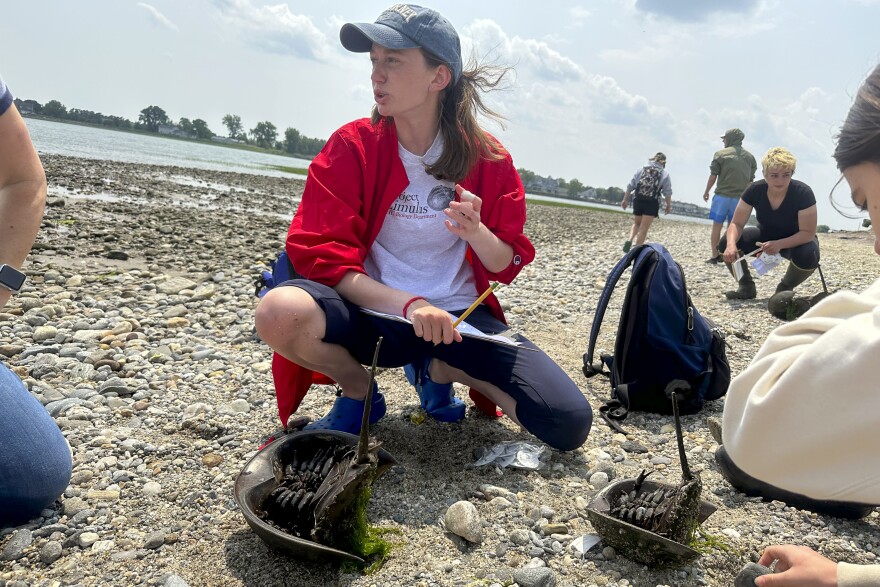They’ve got 12 legs, 10 eyes, eggs that can sustain migratory birds, and blood to help keep humans free of infections. And lest we forget one more cool fact: they lived at the same time as the dinosaurs hundreds of millions of years ago.
Horseshoe crabs — prehistoric tanks with tails — even appear immune to the effects of global warming, surviving in almost any type of water from Maine to the Yucatán Peninsula.
“They can tolerate high pollution, low oxygen, variation and salinity,” said Jo-Marie Kasinak, the director for Project Limulus at Sacred Heart University. “They're such a generalist species … so far, we haven't really seen an impact” from the warming oceans.
Then why are numbers for this hearty living fossil dropping so much? The decline has been so dramatic that Connecticut recently voted to ban the hand-harvesting of horseshoe crabs in state waters.
People are partly to blame. Horseshoe crabs are harvested as bait for eel and whelk fisheries. Their blood is also used by the medical industry to test for bacteria in drugs and intravenous devices.
Kasinak also points to habitat loss as another reason. “Everybody wants to live near and on the beach,” she said. “So we have less and less sandy beaches and marsh habitats for horseshoe crabs to live in.”
Kasinak said she has noticed a huge drop in the species’ numbers since she first began tagging them with Project Limulus in 2008. “We used to easily tag 300 horseshoe crabs a day at Milford Point and now we're lucky if we get 30,” she said.

Connecticut began limiting harvests more than 15 years ago, but Kasinak said the Project Limulus’ tagging program, which is staffed by research students and volunteers, has not seen any positive population trends during that time frame.
Horseshoe crabs aren’t just impacted by Connecticut laws. “From our tagging data, we have learned that the crabs … swim all the way up to Maine, all the way down to New Jersey and Delaware,” Kasinak said.
Since the species takes more than a decade to reach sexual maturity, it can take a long time to determine if new regulations and practices are making a positive or negative impact.
How researchers tag and track a living fossil
Project Limulus was started at Sacred Heart University in 1997 by Jennifer Mattei. It gathers data for the U.S. Fish and Wildlife Service and the Atlantic States Marine Fisheries Commission.
Project teams head to beaches in Connecticut and other Northeastern states during high tide in May and June to find horseshoe crabs as they come to shore to mate.

These slow moving and docile creatures can be easily picked up by their sides and held while a volunteer uses a small awl to punch a hole in the shell.
A white tag is then affixed to the shell with a plastic pin that the shell quickly heals around, sealing it in place. The horseshoe crab is then released back into the water.
If you come across a horseshoe crab, experts say to never pick it up or hold it by the tail because that can be fatal. Pick it up by holding both sides of the shell or, better yet, avoid touching the animal altogether.
If you are lucky enough to find one with a tag, take a picture of the tag and upload the information to fws.gov/crabtag/.





